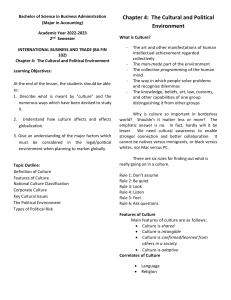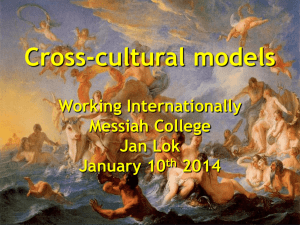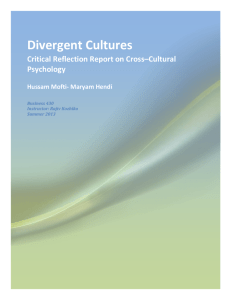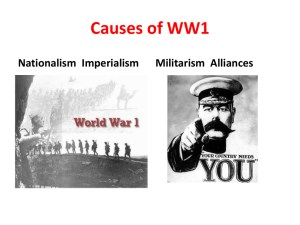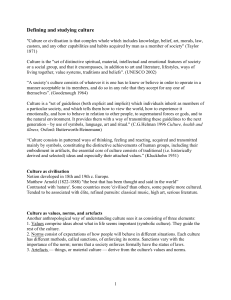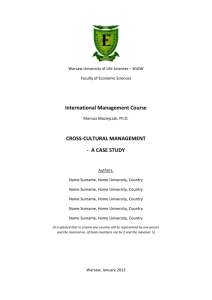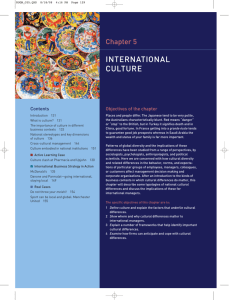Journalistic article attachment
advertisement
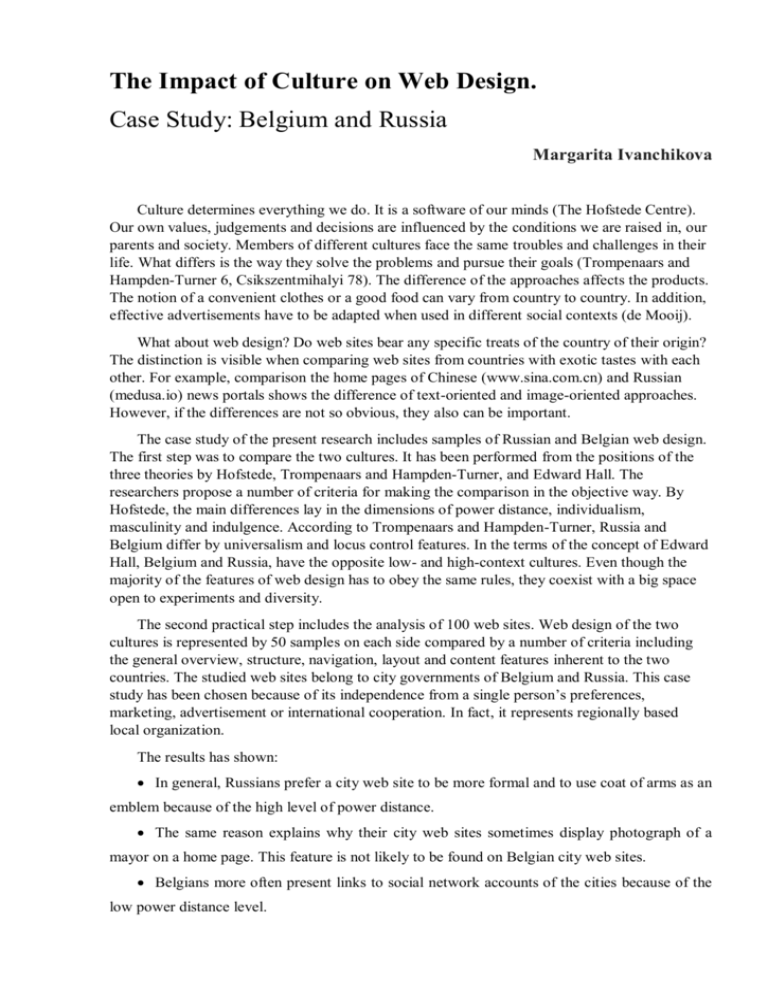
The Impact of Culture on Web Design. Case Study: Belgium and Russia Margarita Ivanchikova Culture determines everything we do. It is a software of our minds (The Hofstede Centre). Our own values, judgements and decisions are influenced by the conditions we are raised in, our parents and society. Members of different cultures face the same troubles and challenges in their life. What differs is the way they solve the problems and pursue their goals (Trompenaars and Hampden-Turner 6, Csikszentmihalyi 78). The difference of the approaches affects the products. The notion of a convenient clothes or a good food can vary from country to country. In addition, effective advertisements have to be adapted when used in different social contexts (de Mooij). What about web design? Do web sites bear any specific treats of the country of their origin? The distinction is visible when comparing web sites from countries with exotic tastes with each other. For example, comparison the home pages of Chinese (www.sina.com.cn) and Russian (medusa.io) news portals shows the difference of text-oriented and image-oriented approaches. However, if the differences are not so obvious, they also can be important. The case study of the present research includes samples of Russian and Belgian web design. The first step was to compare the two cultures. It has been performed from the positions of the three theories by Hofstede, Trompenaars and Hampden-Turner, and Edward Hall. The researchers propose a number of criteria for making the comparison in the objective way. By Hofstede, the main differences lay in the dimensions of power distance, individualism, masculinity and indulgence. According to Trompenaars and Hampden-Turner, Russia and Belgium differ by universalism and locus control features. In the terms of the concept of Edward Hall, Belgium and Russia, have the opposite low- and high-context cultures. Even though the majority of the features of web design has to obey the same rules, they coexist with a big space open to experiments and diversity. The second practical step includes the analysis of 100 web sites. Web design of the two cultures is represented by 50 samples on each side compared by a number of criteria including the general overview, structure, navigation, layout and content features inherent to the two countries. The studied web sites belong to city governments of Belgium and Russia. This case study has been chosen because of its independence from a single person’s preferences, marketing, advertisement or international cooperation. In fact, it represents regionally based local organization. The results has shown: In general, Russians prefer a city web site to be more formal and to use coat of arms as an emblem because of the high level of power distance. The same reason explains why their city web sites sometimes display photograph of a mayor on a home page. This feature is not likely to be found on Belgian city web sites. Belgians more often present links to social network accounts of the cities because of the low power distance level. Furthermore, Russian web sites are executed in the same language by default because of collectivistic nature of the culture. Belgians are more eager to register a personal account on a city web site because of the individualistic features of the culture. Belgian universalism explains the prevalence of fixed-width web sites, while Russians prefer liquid width. Russians more often use drop-down menus because they are members of a high-context society. They also favor illustrated menus more because of the femininity of the culture. Belgians more often display photos of smiling faces, leisure, art and sport scenes because of the high level of indulgence in the culture. So far, there have been found a connection between culture and web design. The final part of the research was aimed on qualitative approval of the patterns found during the previous steps. It started with creation of the two templates representing the collective image of typical city web sites of Belgium and Russia based on the statistical results of the previous analysis. Then, the templates were assessed with the help of eight interviews, taking four respondents from each culture. The age of the interviewees ranged between 21 and 51 years. The interviewed people were from Roeselare, Leuven, Antwerpen, and Brugge in Belgium and from Saint Petersburg and Petrozadovsk in Russia. Their occupation ranged from the unemployed and students to accountants, event manager, software developer and city guide. The interviews have shown that Belgians and Russians express different opinions of what a proper city web site should look like. The expectations and preferences of members of the two cultures correlate with the findings of the case study analysis and prove the sustainability of the discovered patterns. In summary, the question of the dependence of web design dependence on culture features was observed in the present paper. It has shown some implications of cultural diversity in web design. However, the ways in which culture influences human practices cannot be exhaustively explained. The questions about culture cannot be simply answered and there is always a space for further explorations. In general, the understanding of cultural diversity is a very important issue in contemporary situation of globalization and international business growth. Knowing basic rules about user expectations can help people creating and adapting convenient web interfaces for different target groups. List of References Csikszentmihalyi, Mihaly. Flow: The Psychology of Optimal Experience. New York Harper Perennial, 1990. Print. de Mooij, Marieke. “Masculinity/Femininity and consumer behavior.” Masculinity and Femininity: The Taboo Dimension in National Cultures. Ed. Geert Hofstede. Thousand Oaks, CA: SAGE, 1998. 55-73. Print. Hall, Edward T. Beyond Culture. Herdr. Garden City Anchor, 1981. Print. Trompenaars, Fons, and Charles M. Hampden-Turner. Riding the Waves of Culture: Understanding Cultural Diversity in Business. Rev. repr. London Brealey, 1999. Print. Web sites Chinese news web site Sina. Mode access: http://www.sina.com.cn (04.2015) Russian news web site Meduza. Mode access: http://medusa.io (04.2015) The Hofstede Centre. Mode access: http://geert-hofstede.com (04.2015)
